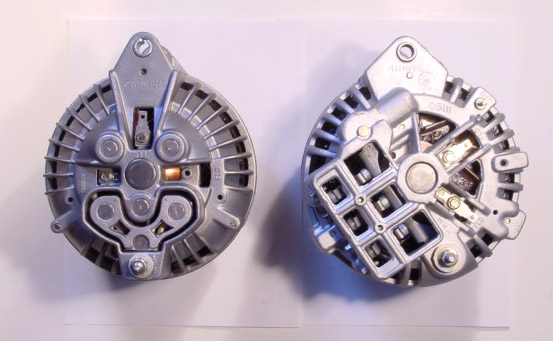OK Andre, what you have verified is that the field is "probably good.
Now you need to chase it from the ignition switch to the field
The circuit path is...........
from ignition switch...........through the firewall
and branches off to feed BOTH ignition and regulator.
CHECK THAT your "IGN" wire feeding the regulator is "hot" with the key on.
You now know that the alternator field is probably good
So now, "backtrack"
Take your lamp, ground to the block (or multimeter) and hook the remaining probe to your IGN wire which went to the regulator. This should be "battery" voltage with the key in "run."
If not, find out why
If so, hook your green field wire up at the alternator and run the first check again
With the key in "run"
Hook one end of your lamp (or meter) to the IGN wire (originally blue)
CHECK that it has 12V to ground.
NOW move the GROUND connection of your lamp or meter to the green field wire. The lamp should light or you should get 12V on meter
If not, CHECK the green wire. It only goes one place---------from the regulator to the alternator field
If this check DOES show a circuit path,
take a clip lead and jumper the VR IGN and FIELD (blue to green) wires together. With the field hooked up (green) at the alternator and engine running, this should result in a "full charge" condition when RPM is increased.

















